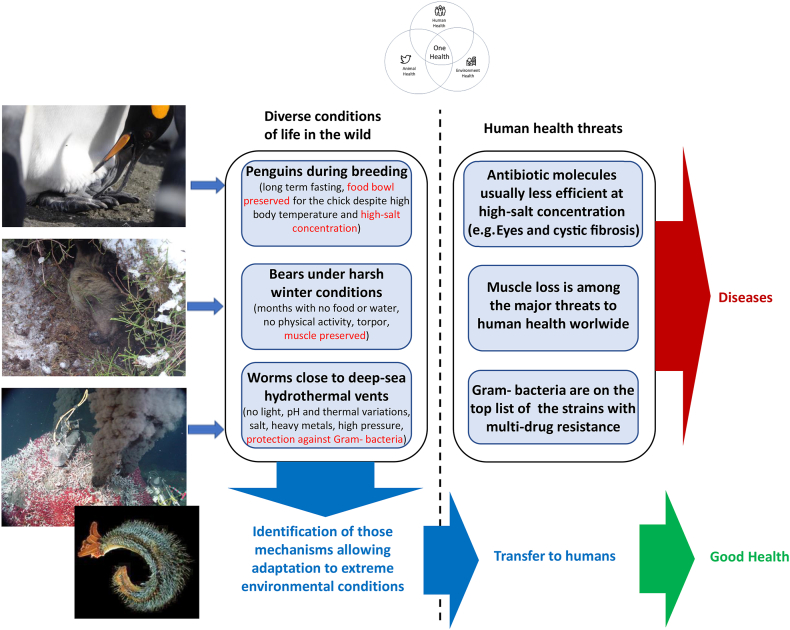Fieldwork on animals living in extreme conditions as a source of biomedical innovation
引用次数: 0
Abstract
Most biomedical research on animals is based on the handful of the so-called standard model organisms, i.e. laboratory mice, rats or Drosophila, but the keys to some important biomedical questions may simply not be found in these. However, compared with the high number of molecules originating from plants in clinical use, and with the countless unique adaption mechanisms that animals have developed over the course of evolution to cope with environmental constrains, there is still few investigations on wild animals with biomedical objectives, and field studies are far fewer. A major limitation is insufficient funding, the main causes of which we analyze. We argue, however, that fieldwork is a key driver in generating new scientific knowledge as part of a One Health approach, by observing/documenting and understanding the diverse and largely unexplored biological processes evolved by animals adapted to unusual environmental conditions, which would be extreme conditions for humans. These conditions do not only refer to extreme temperatures, since lack of food or water, high pressures or lack of oxygen, are clearly extreme constraints. To conduct this research, there are serious limitations we propose to address. Specific techniques and methods are requested, not only to work in extreme environments, but also to minimize the ecological footprint of field work. The erosion of biodiversity is a major threat. The reduction of animal disturbance, a key issue, requires specific technologies and expertise. An ethical approach is requested, for the sake of transparency and to comply with the Nagoya Protocol on genetic resources. An interdisciplinary expertise and a meticulous planning are requested to overcome the field constraints and interface the associated laboratory work. We recommend focusing on the major threats to global human health today, which wild animals appear to resist particularly well, such as antibioresistance and diseases associated with lifestyle and senescence.

对生活在极端条件下的动物进行实地考察,作为生物医学创新的来源。
大多数动物生物医学研究都是基于少数所谓的标准模式生物,即实验室小鼠、大鼠或果蝇,但一些重要生物医学问题的关键可能根本不在这些生物医学研究中找到。然而,与临床应用的大量源自植物的分子相比,与动物在进化过程中发展出的无数独特的适应机制相比,以生物医学为目的的野生动物研究仍然很少,实地研究也少得多。一个主要的限制是资金不足,我们分析了其主要原因。然而,我们认为,实地考察是产生新科学知识的关键驱动因素,是“同一个健康”方法的一部分,通过观察/记录和理解动物适应不寻常环境条件(对人类来说是极端条件)而进化出的多样性和很大程度上未被探索的生物过程。这些条件不仅指极端温度,因为缺乏食物或水、高压或缺氧显然是极端的限制条件。为了进行这项研究,我们提出要解决一些严重的限制。需要特定的技术和方法,不仅要在极端环境中工作,还要尽量减少野外工作的生态足迹。生物多样性的侵蚀是一个主要威胁。减少动物干扰是一个关键问题,需要具体的技术和专门知识。为了透明度和遵守关于遗传资源的《名古屋议定书》,要求采取合乎道德的办法。需要跨学科的专业知识和细致的规划来克服现场限制并与相关的实验室工作相结合。我们建议把重点放在当今全球人类健康面临的主要威胁上,野生动物似乎特别能抵御这些威胁,例如抗生素耐药性以及与生活方式和衰老有关的疾病。
本文章由计算机程序翻译,如有差异,请以英文原文为准。
求助全文
约1分钟内获得全文
求助全文

 求助内容:
求助内容: 应助结果提醒方式:
应助结果提醒方式:


